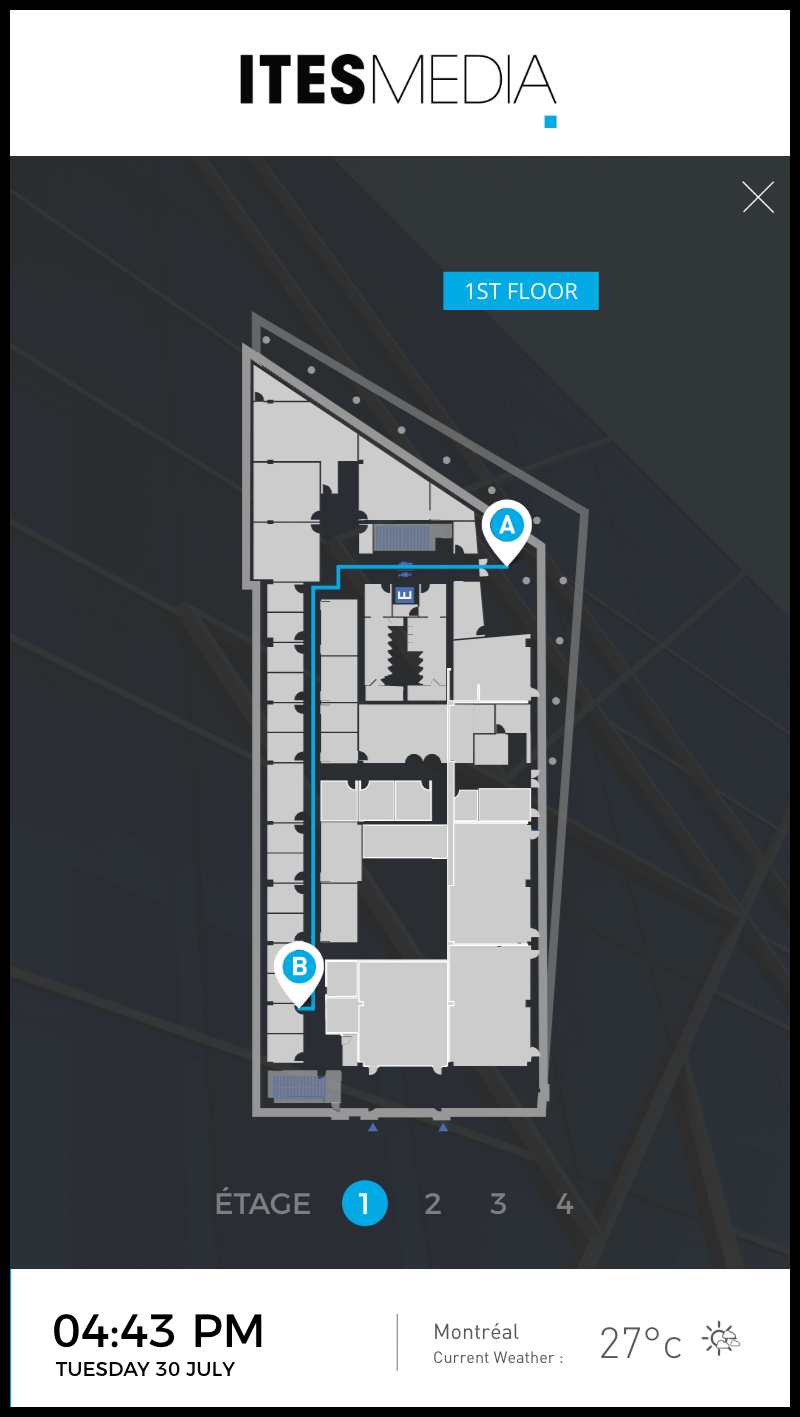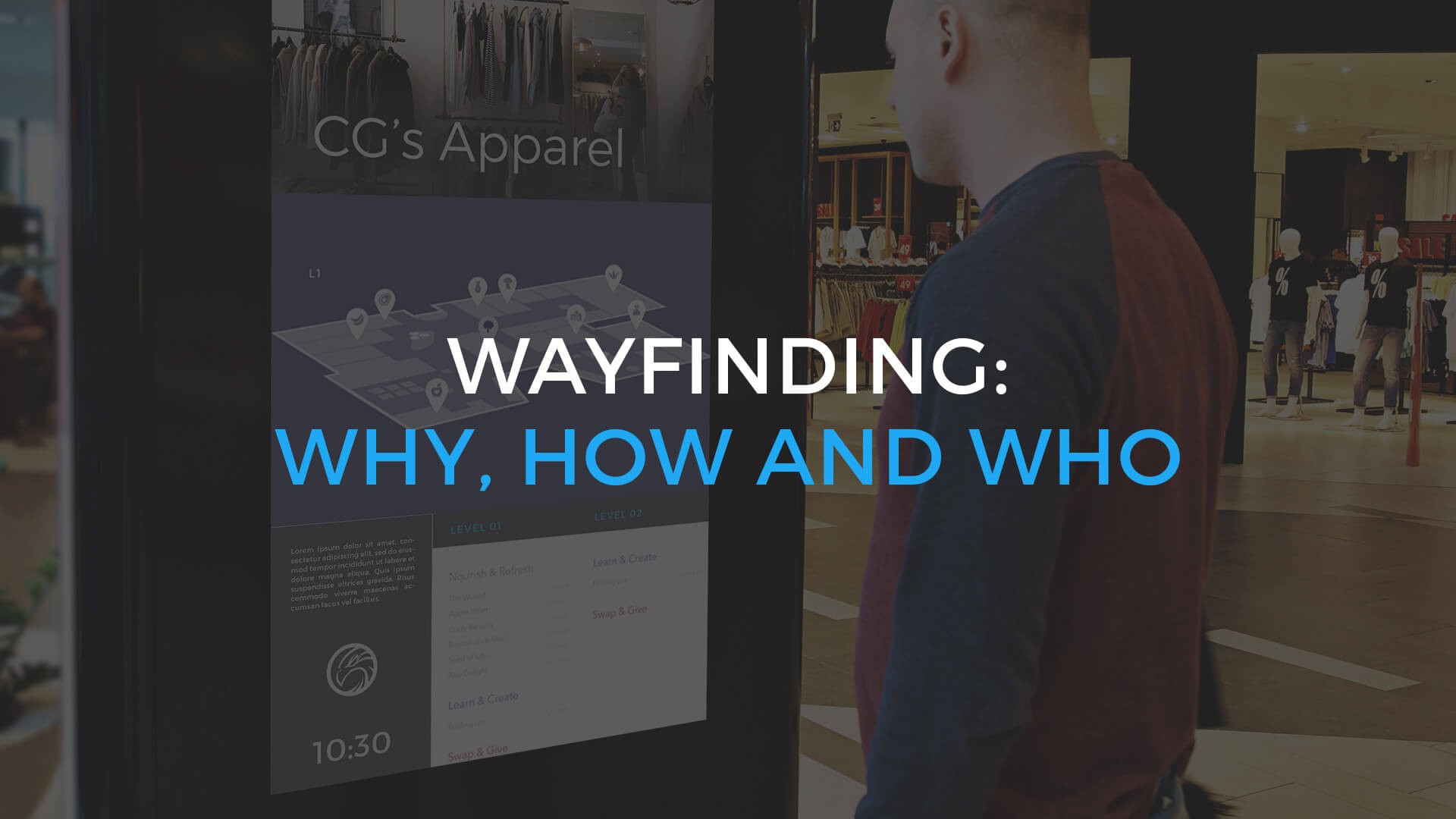We've all walked into a big building, stopped a few feet in, and quietly thought, "OK, where am I and where do I need to be?"
Finding our way around big places like office towers, office campuses, university campuses, medical complexes, airports, rail stations, central business districts, congress centres and shopping malls can all be daunting. There are rarely enough signs to point the way, and those signs may not have much in the way of answers beyond. They may provide location, but no context or help in getting to a target location, like a specific room or shop.
The answer is wayfinding, and ideally, digitally driven wayfinding. Printed maps and directories are only as good as the last time they were updated, and usually relay the absolute basics. Digital signage, done right, is current, interactive and deep in detail.
With a digital wayfinding application, otherwise lost and perplexed visitors to a venue can easily find out:
- Where they are, with You Are Here! flashing on an interactive map
- Where they need to be, like a store, clinic or lecture room, with directions and walking time estimates
- Locations for things like food services, a bank machine or washrooms, based on keyword and category searches done right at the screen.
Thoughtfully positioned around buildings and large multi-building venues, digital wayfinding stations reduce frustrations for visitors and ease the burden on facility operators to stay on top of what can be a moving target.
Consider what happens in places like shopping centers and airport concourses, where tenants and services are regularly switching out or relocating. With a print directory and maybe an associated map, just one tenant moving out or relocating, or a new one coming in, means re-designing and updating the printed directory and map, sending it off to the printers, and then taking the time to get around to all the directory stations to put the new version in place.
Then a week later, something else changes, and the increasingly costly, time-consuming process needs to be repeated.
Digital is a much more nimble, efficient way to deliver on those basics, but that's really just the opening argument for going digital with wayfinding.
Consider these advantages of Wayfinding via Digital Signage Terminals and Displays
Interactive
Digital natives - the huge population wave of adolescents and young adults who grew up not knowing anything but a world of smartphones, tablets and touch screens - walk up to things like concourse and entryway directories expecting and assuming they're just big versions of their phones. You can see the confusion as they tap and try to pinch, zoom and swipe glass poster cases that have nothing but printed material and backlights inside. Interactive digital is expected.
Clever
Basic printed maps and directories can list what's there and point out location. Digital wayfinding terminals (stations) can help people find what they need, without knowing specific names, and in context to where they are. Finding a place for quick bite at an airport works a lot better if you can use a touchscreen that locates where you are in a terminal and locates nearby restaurants. There's no value in knowing what eateries are in another terminal. Even better, many wayfinding systems will show the walking route, and estimate the time needed to get there. In some cases, those directions can be pushed to the user's smartphone.
Flexible
Printed material can do whatever it was designed to do, and that's it. With digital signage, a wayfinding station can serve many purposes - running multiple functions or changing either on demand or through scheduling. For example, a railway hub can use wayfinding stations to direct people to tracks and to services in the terminal, but also provide touch-driven options for getting train status, schedules or interactive route-finders that help people sort out how they can get from there to another there. When they're not busy, they can be used to support marketing for retail tenants and services, public safety alerts or third-party advertising that can offset or recover the capital and operating costs of the digital stations.
Fast or Instant
Doing things with print or other means can take hours, days or weeks to fully turn around. With digital, changes can be made quickly or even automatically. For example, suppose circumstances at a convention center require a meeting or event to be re-located to a different room or hall. If the facility's management office uses a room booking system, or even just a shared spreadsheet on a network directory, when room assignments are changed in the management software, they can instantly change on the wayfinding/directory system. Notifications for things like public safety and weather warnings can also, easily, be automated and triggered to appear on screens.

How to make your Wayfinding project better? Work with a modern signage software company.
ITESMEDIA has a long, deep background working with large organizations and data - both real-time and archived, and has worked with a wide range of organizations on everything from searchable directories and wayfinding applications. For example, the Saint-Hyacinthe Technopole near Montreal engaged ITESMEDIA to develop a solution involving interactive kiosks and screens that promote attractions, hotels, restaurants, shops and other businesses near the innovation and meetings facility.
Guest experience is now recognized as a key to business success - with visitors having the sort of easy, helpful and positive experience that makes them want to return. That starts from the moment people arrive, and in a big footprint facility, stopping confusion and frustration before it develops - with a great wayfinding and directory application - is a smart technology decision.








